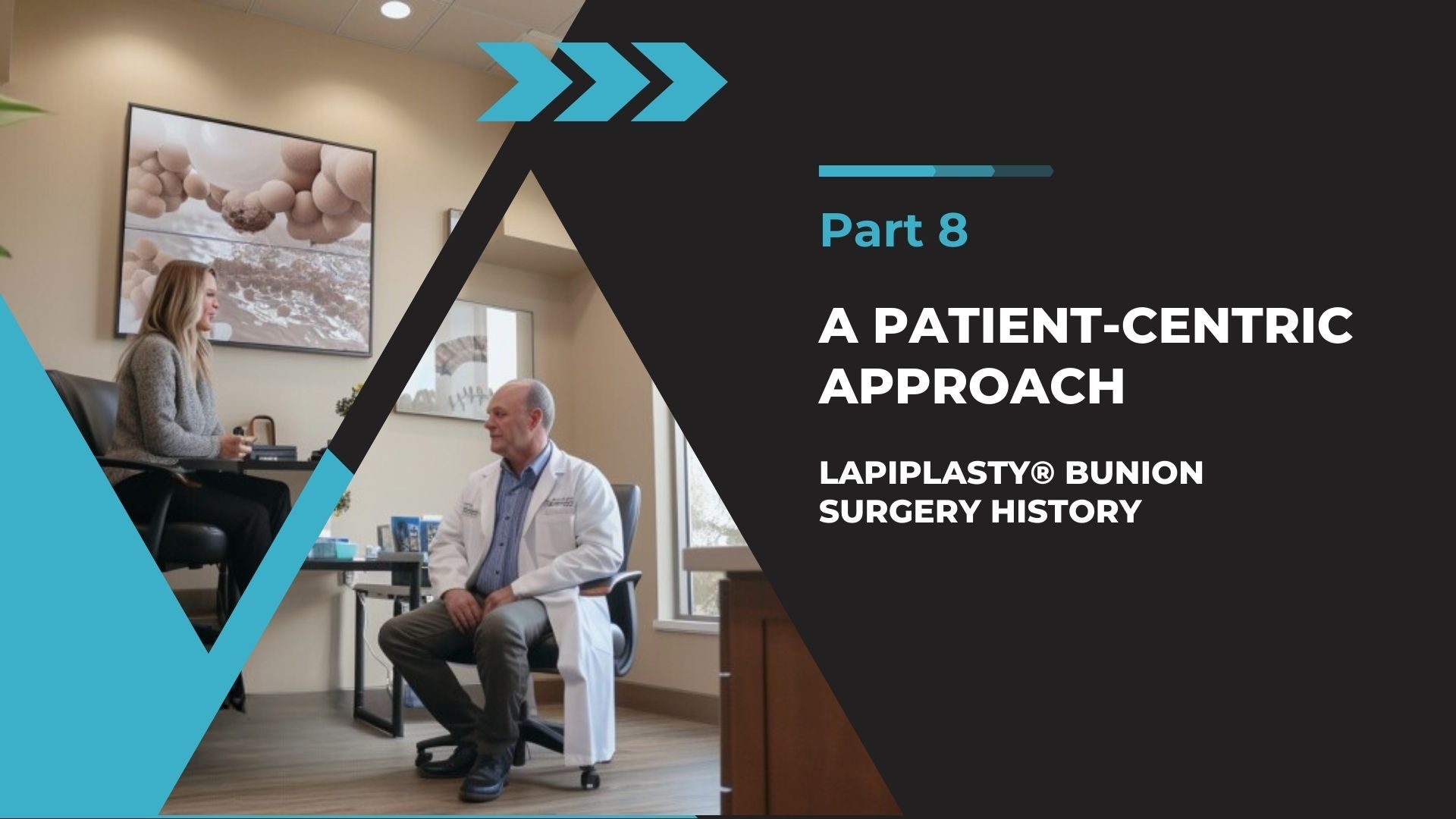The history of Lapiplasty®
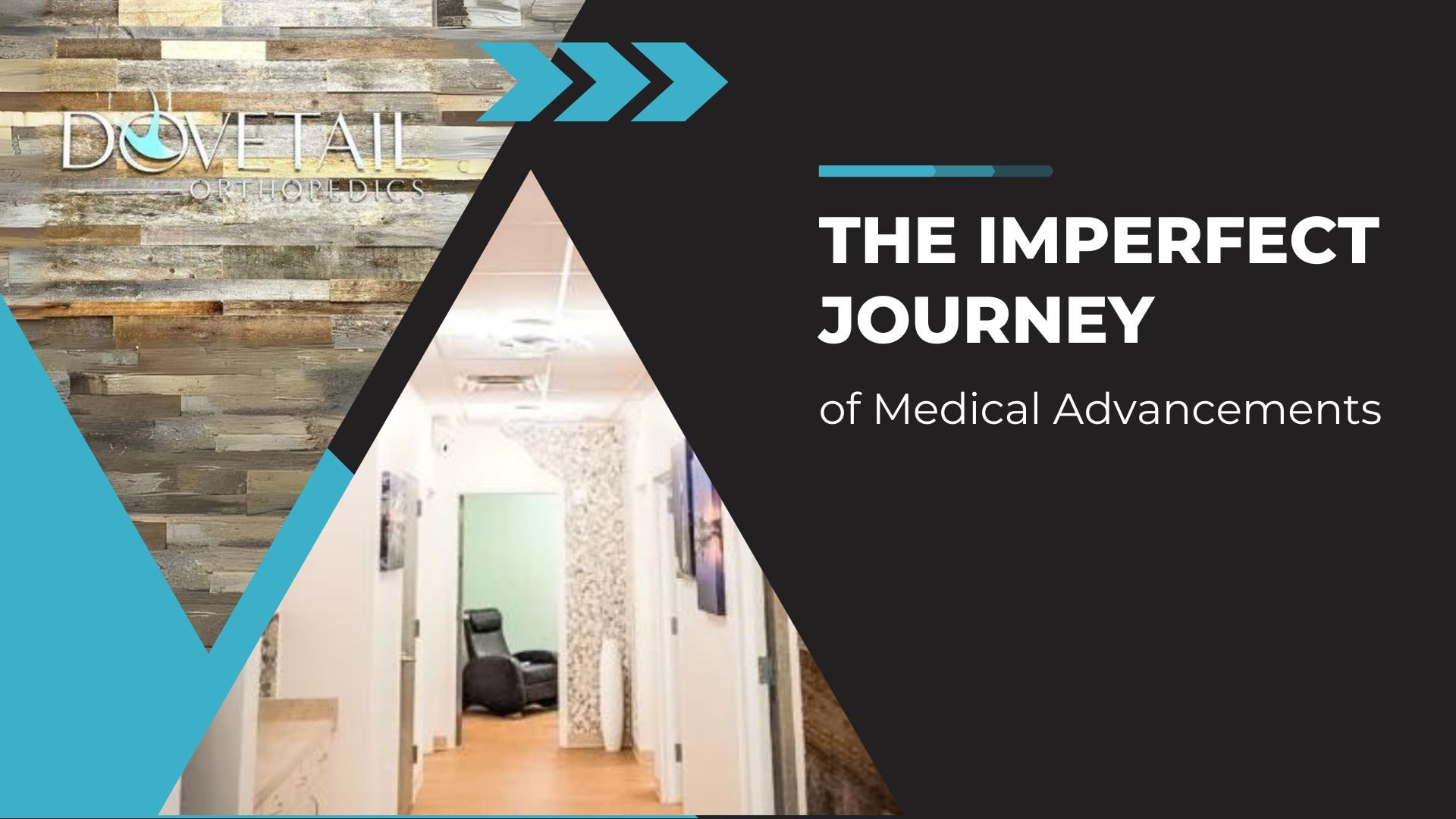
Lapiplasty® Bunion Surgery History: Part 1 – The Blind Men
The Imperfect Journey of Medical Advancements: Lapiplasty®
In an ideal world, we like to envision medicine and surgery in terms of perfection, constantly advancing with groundbreaking discoveries each year. However, the reality often paints a different picture.
Many medical procedures, despite being practiced for years, are still in their infancy regarding effectiveness and efficiency. This was notably the case with bunion surgery. For years, this common yet troublesome condition remained a challenge, with conventional surgical methods offering limited success. The development of Lapiplasty® by Dr. Santrock and his colleagues at Treace Medical eventually marked a significant milestone, but the start of the journey was an unlikely one marked by reluctant surgeons.
Lapiplasty® Bunion Surgery History: Part 2 – Roots of Resilience
Dr. Santrock’s Formative Years in West Virginia
In part 1 of our Lapiplasty® Bunion Surgery History series, we looked at the imperfect journey of medical advancements and how Lapiplasty® evolved in the early years of development. It’s fascinating to consider how events, influences, and personal resilience can shape a career path, leading to groundbreaking medical innovations. This principle is reinforced in the story of Dr. Santrock, whose unique circumstances and upbringing shaped his approach to medicine and played a pivotal role in his eventual involvement with the Lapiplasty® team. Today, we examine the formative years of Dr. Santrock and uncover how his upbringing in West Virginia’s coal country laid the foundation for his future in medicine.

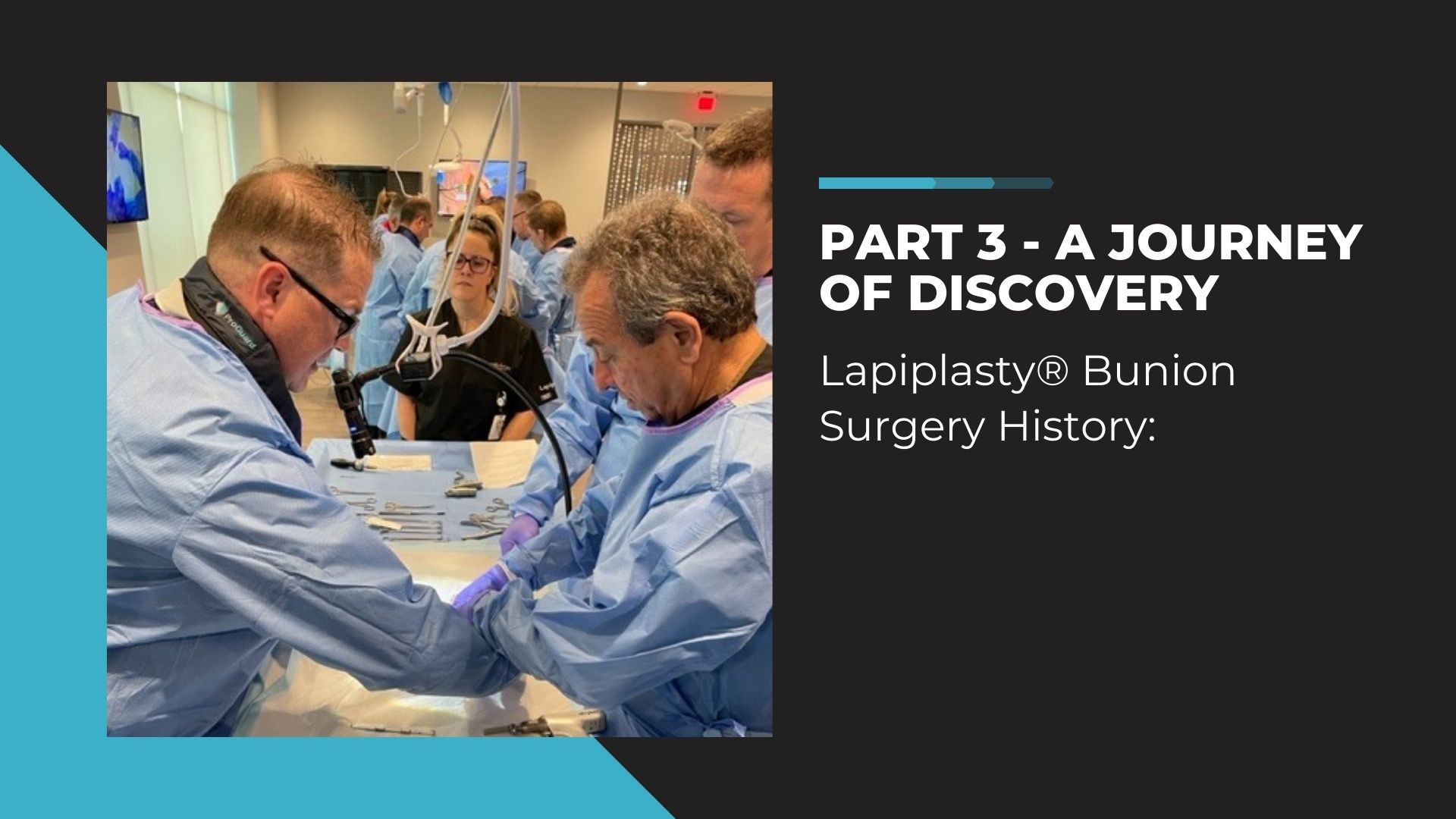
Lapiplasty® Bunion Surgery History: Part 3 – A Journey of Discovery
The Journey of Discovery: Doubt, Support, and Breakthrough
With all medical innovation, the path to discovery is often laid with challenges and skepticism. Challenges and skepticism were certainly the themes as Dr. Santrock and the Treace research team embarked on their journey to redefine bunion surgery. The goal was clear: to address the inadequacies of traditional bunion surgery techniques and offer a solution that could benefit the 400,000 patients undergoing bunion surgeries annually. Unfortunately, the path was not as straightforward as one would hope to develop Lapiplasty® Bunion Surgery.
Lapiplasty® Bunion Surgery History: Part 4 – Residency & Adversity
The Formative Medical School Journey
Dr. Santrock’s path to becoming a prominent figure in the development of Lapiplasty bunion surgery began in the rigorous academic environment of medical school at West Virginia University. It was here that his love for physiology and anatomy took root. The first two years of his schooling were dominated by textbooks and laid the groundwork for his medical knowledge. However, it was the hands-on experience in the lab—working with simulations and cadavers—that truly ignited his passion for healing. This transition from theoretical learning to practical application was a critical moment for Dr. Santrock, offering him a tangible understanding of the demands and rewards of a surgical career.

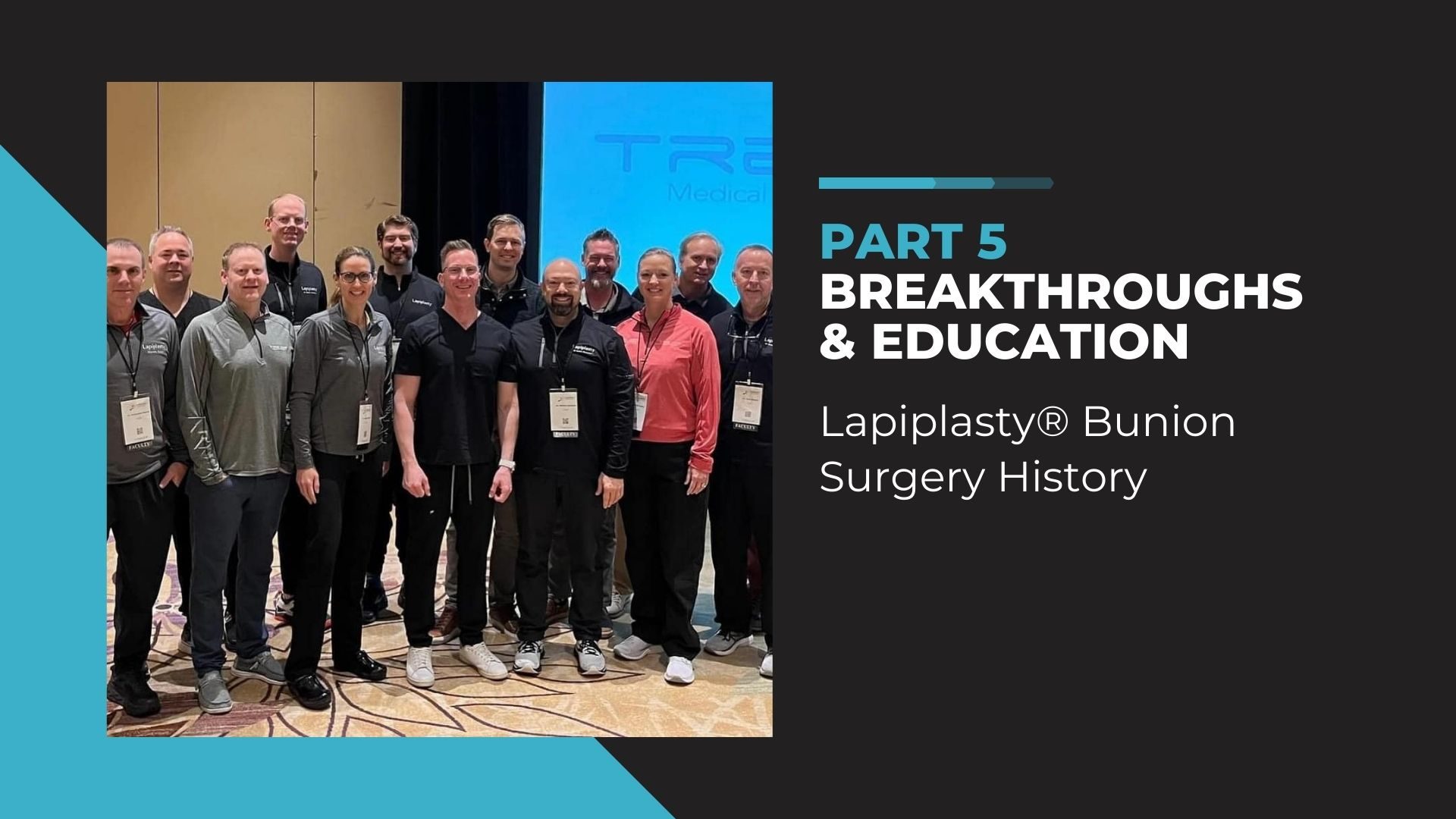
Lapiplasty® Bunion Surgery History: Part 5 – Breakthroughs & Education
The Revolutionary Path of Lapiplasty®: Overcoming Challenges and Setting New Standards
As the summer of 2015 marked major breakthroughs in the development of Lapiplasty® by Dr. Santrock and the team at Treace Medical Concepts, a new chapter began. The innovation was clear, but the path to widespread acceptance and implementation was fraught with obstacles. How would this groundbreaking technique be received by the medical community? In part 5 of our series, Lapiplasty® Bunion Surgery History, we look at the journey from concept to surgical acceptance. This story is a testament to perseverance, insight, and the relentless pursuit of improving patient outcomes.
Lapiplasty® Bunion Surgery History: Part 6 – A Return to WVU School of Medicine
Lapiplasty® Bunion Surgery History: The Story Behind the Breakthrough
In medical advancements, every breakthrough carries a story, a ‘why’ that drives the relentless pursuit of innovation. The history of Lapiplasty® Bunion Surgery is no exception. At the heart of this approach to bunion correction is Dr. Santrock’s story. His journey from a practicing surgeon to an influential professor underscores the impact of visionary thinking in medicine. As we continue our series on the history of Lapiplasty®, we uncover the pivotal moments that shaped Dr. Santrock’s career and paved the way for this surgical revolution.
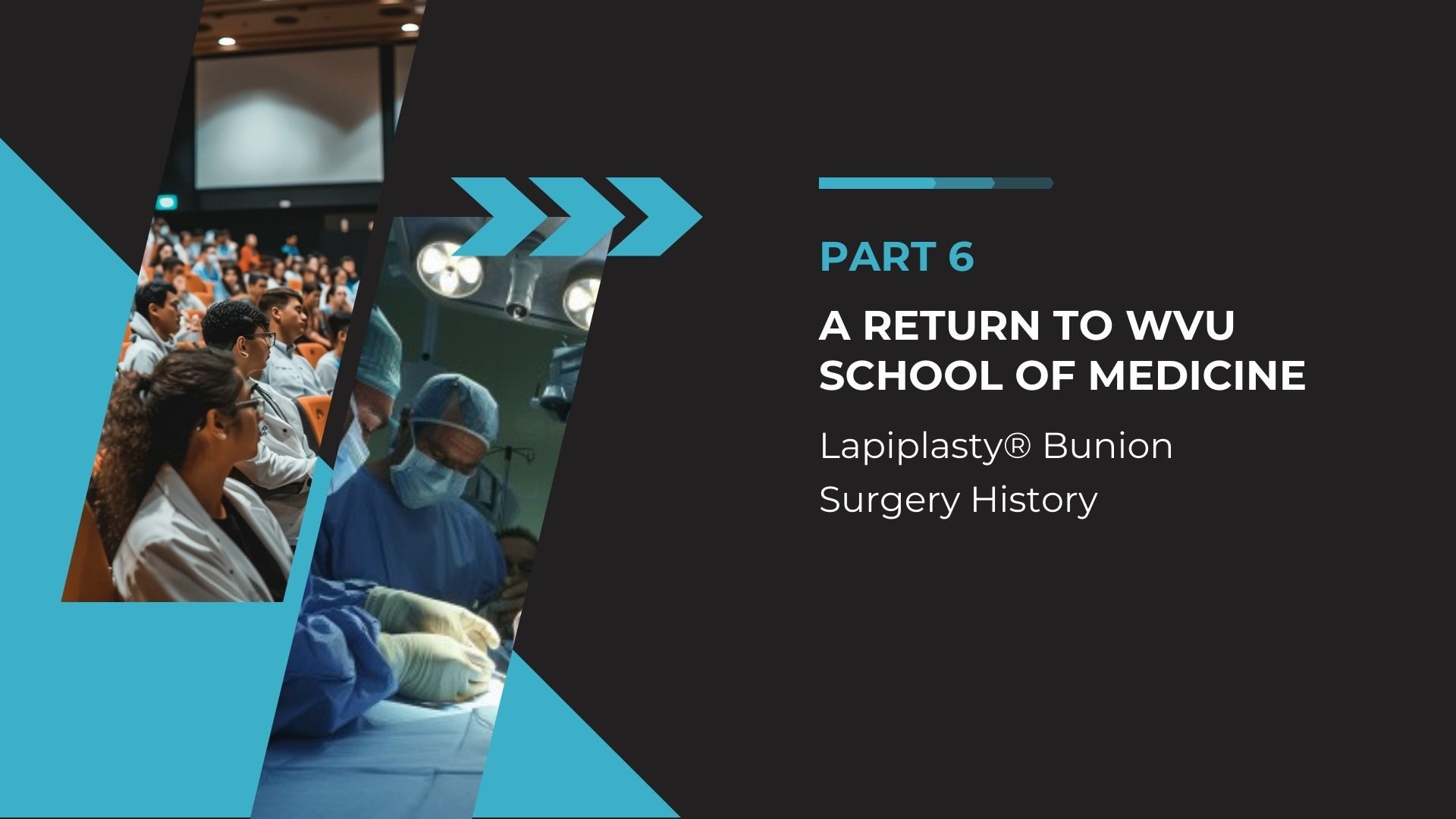

Lapiplasty® Bunion Surgery History Part 7: The Bunion Surgery Stigma
The Battle Against Bunion Stigma
For Dr. Santrock, Treace Medical Concepts, and the Lapiplasty® team, the innovation of Lapiplasty® was just the beginning. The real challenge lay in dismantling the longstanding stigma surrounding bunion surgery, a field historically marred by mixed results and skepticism. The team was poised for a relentless endeavor to reeducate and redefine bunion treatment in the eyes of both the medical community and patients.
Undeterred, the Lapiplasty® team embarked on a nationwide campaign, reaching out to every bunion surgeon with a mission to enlighten and convert. Armed with compelling statistics and groundbreaking research from reputable sources such as the National Center for Biotechnology Information, NS Medical Devices, and UChicago Medicine, they made a compelling case for Lapiplasty®. However, it was through face-to-face discussions that surgeons truly grasped the urgency and revolutionary potential of Lapiplasty®, recognizing its capacity to alter the bunion surgery landscape fundamentally.
Lapiplasty® Bunion Surgery History Part 8: Dovetail Orthopedic’s Patient-Centric Approach
The Journey of Lapiplasty®: A Retrospective
As we dive into Part 8 of our series on the History of Lapiplasty®, we want to reflect on the incredible journey of the Lapiplasty® Bunion Surgery History series. From the symbolic insights of “The Blind Men” to the challenges and triumphs faced by Dr. Santrock, each part of this series has pieced together the coincidences and perseverance of Lapiplasty®’s development team. Through “Dr. Santrock’s Early Years,” we’ve witnessed passion in its purest form, driving innovation against all odds with a Patient-Centric Approach.
